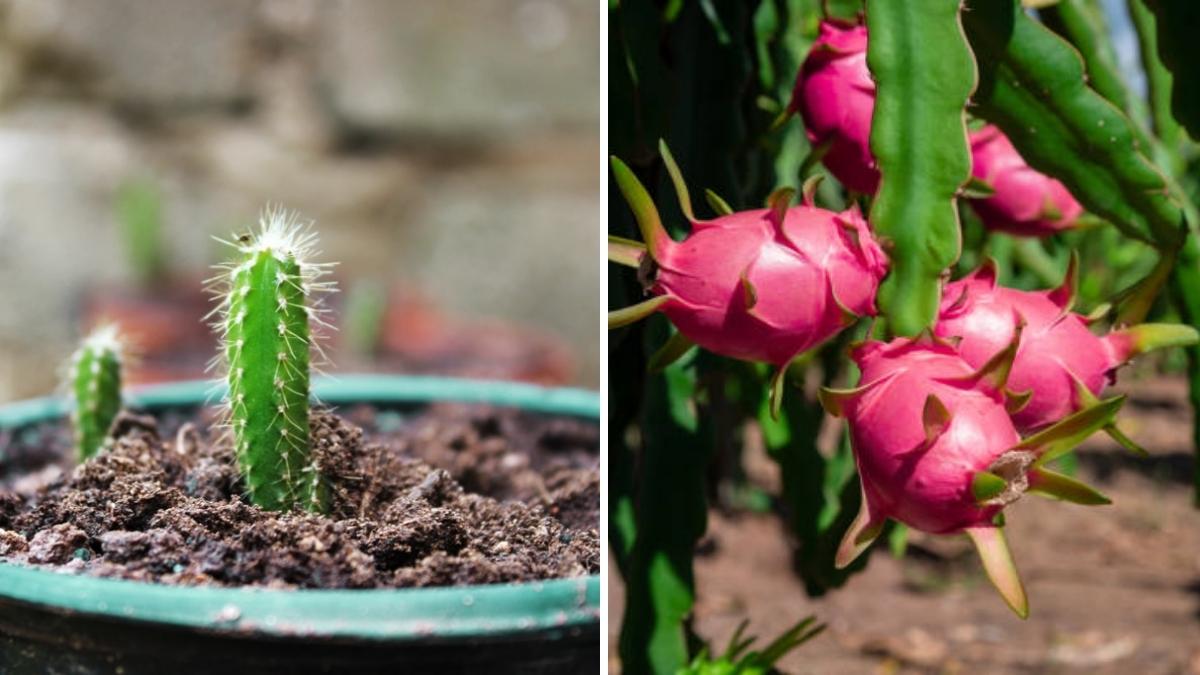Dragon fruit, with its vibrant pink or yellow skin and unique, sweet taste, is a tropical fruit that has gained popularity worldwide. Known for its striking appearance and numerous health benefits, it’s no wonder many gardeners want to grow it. If you live in a place with a mild climate and have access to a balcony, growing dragon fruit year-round is entirely possible. Here’s how you can cultivate this exotic fruit right at home, even on a small balcony.
Why Grow Dragon Fruit on Your Balcony?
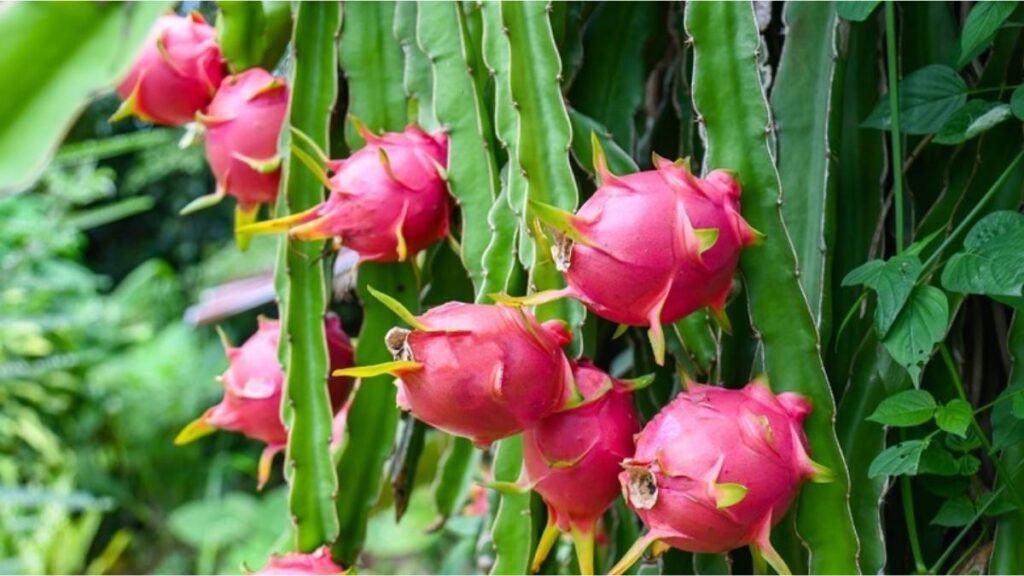
Before we dive into the specifics, let’s talk about why dragon fruit is such a great choice for balcony gardening. Not only is it visually striking with its vibrant pink or yellow skin and green “scales,” but it’s also relatively easy to care for once you understand its needs.
Dragon fruit plants are actually cacti, which means they’re hardy and drought-tolerant. They do best in warm climates, but with a little creativity, you can make it work year-round, even in cooler regions. Plus, they’re low-maintenance compared to many other fruit-bearing plants.
What Do You Need to Grow Dragon Fruit on Your Balcony?
Growing dragon fruit is easier than you might think, but you’ll need a few essentials to get started. Here’s a checklist of the basic requirements:
- A sunny spot: Dragon fruit loves the sun, so pick a location on your balcony that gets at least 6 hours of direct sunlight a day. If your balcony is shaded, you can still grow it, but you’ll need to supplement with grow lights.
- A large pot or container: Dragon fruit needs room to spread out, so a big pot (at least 12-16 inches in diameter) with drainage holes is essential.
- Support structure: Since dragon fruit is a climbing cactus, it needs something to climb on. A simple trellis or even a sturdy pole will work.
- Good soil: Well-draining soil is key. Cactus or succulent soil mix works great, but you can also make your own mix with equal parts sand, perlite, and potting soil.
Once you’ve got these basics, you’re ready to get started!
How to Plant and Care for Your Dragon Fruit
Step 1: Planting Your Dragon Fruit
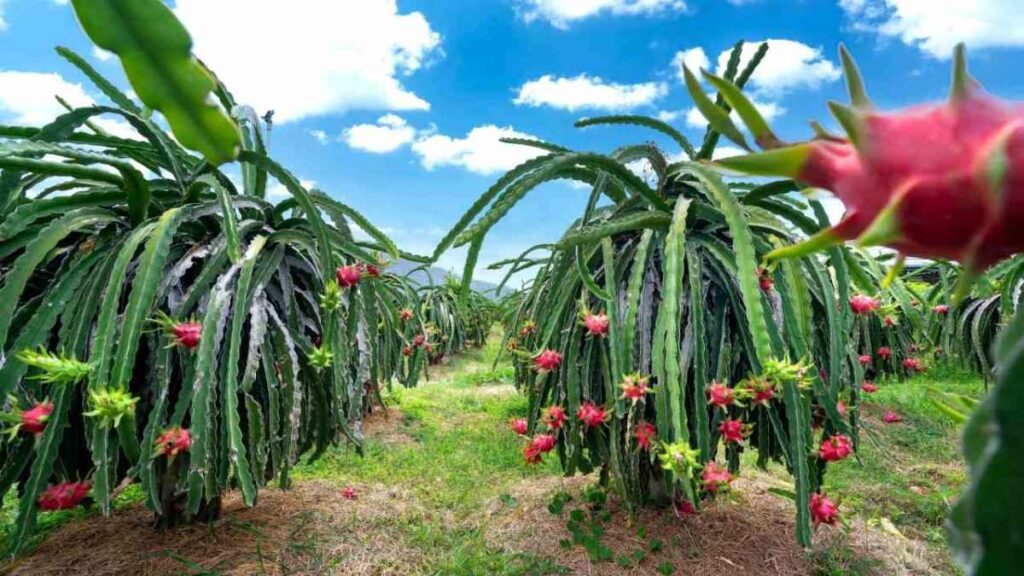
Start by planting your dragon fruit cutting or seedling in a large pot. If you’re using a cutting, ensure that it’s at least 6–8 inches long. After planting, water it lightly, but make sure not to overdo it dragon fruit plants don’t like sitting in soggy soil.
Since dragon fruit grows best in warm weather, it’s best to plant it in the spring or early summer if you’re starting from scratch. However, you can also grow it indoors year-round if you’re in a colder climate, just make sure it gets enough light.
Step 2: Providing the Right Environment
Dragon fruit plants are picky about temperature. They thrive in temperatures between 65°F and 85°F (18°C–30°C). If you live in a cooler climate, you might want to move your plant inside during the winter months or use a grow light to simulate sunlight.
Water the plant about once a week, but make sure the soil is dry before watering again. They don’t like to be overwatered, so a good rule of thumb is to wait until the soil is completely dry before giving it a drink.
Step 3: Pruning and Training Your Plant
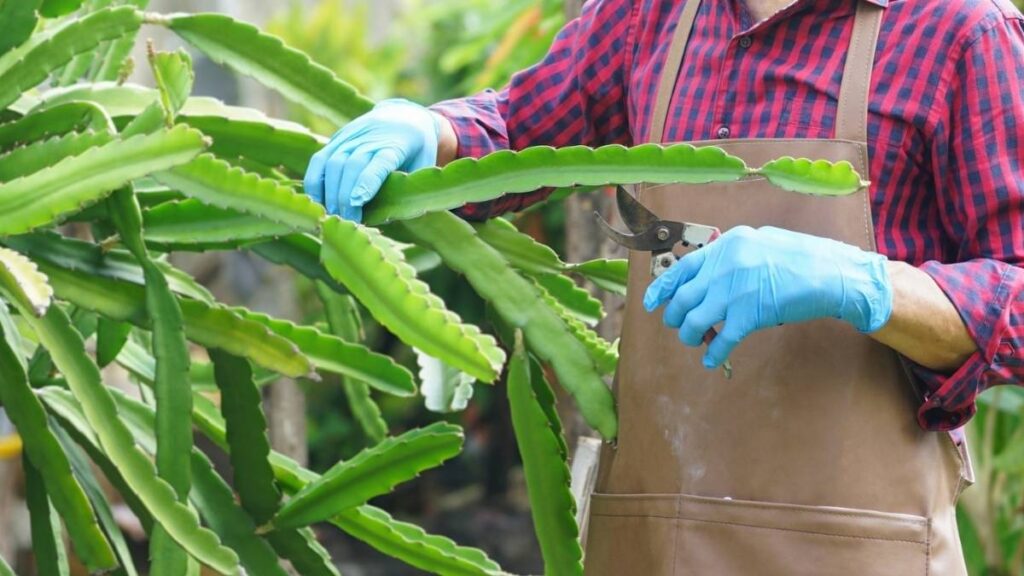
Pruning helps keep your dragon fruit plant healthy and encourages more fruit production. Trim back any long, leggy branches and encourage side growth. You can also prune to shape the plant and keep it manageable in your small balcony space.
Since dragon fruit is a climbing plant, you’ll need to train it to grow vertically by tying the stems to your support structure. This will help prevent the plant from sprawling out and taking over your space.
Best Tips for Year-Round Growth
Growing dragon fruit year-round on your balcony requires some special attention. Here are a few tips to keep it thriving all year long:
1. Use Grow Lights in the Winter
If you’re growing dragon fruit in a location with cold winters, it’s important to supplement natural light with grow lights. Place them above the plant for about 12-14 hours per day to mimic the sunlight they would get in their native environment.
2. Temperature Control
As mentioned, dragon fruit prefers warm temperatures. If it’s too cold in winter, bring your plant indoors or use a space heater near it (but not too close). Just be sure it’s not in a drafty area, as sudden temperature fluctuations can stress the plant.
3. Fertilizing for Growth
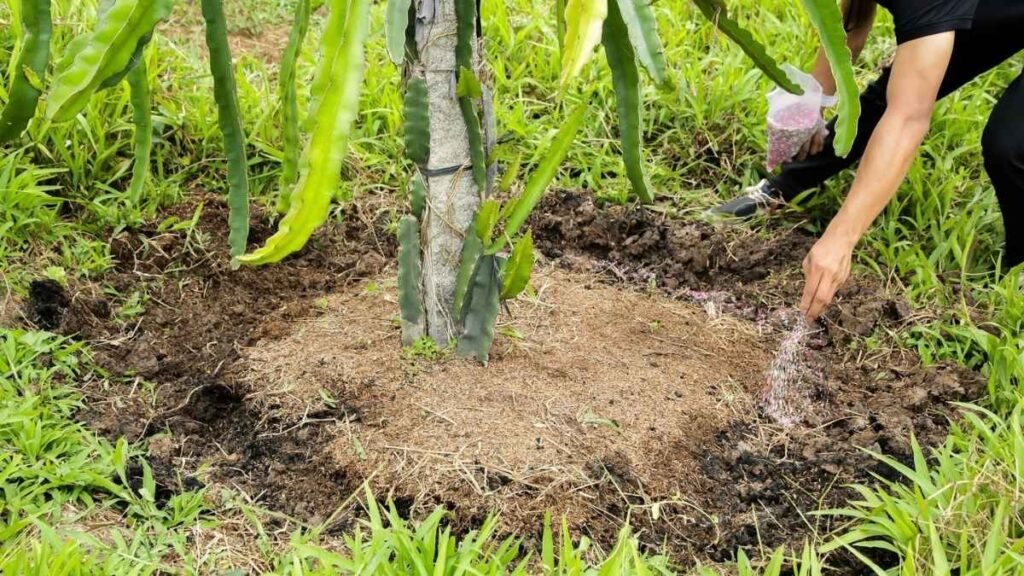
Feed your plant every 4-6 weeks during the growing season with a balanced fertilizer. You can use a liquid cactus fertilizer or a slow-release granule. Be sure not to over-fertilize, as this can lead to lots of foliage but little fruit.
4. Pollination for Fruit Production
Dragon fruit flowers bloom at night and are pollinated by bats, moths, or even bees. If your balcony garden doesn’t attract these pollinators, you might need to hand-pollinate. To do this, take a small paintbrush or cotton swab and gently transfer pollen from one flower to another.
5. Watch Out for Pests
Dragon fruit plants are relatively pest-resistant, but they can still attract aphids or scale insects. Keep an eye out for any signs of pests, like sticky residue or discolored leaves, and treat them promptly with organic insecticide or neem oil.
Harvesting Your Dragon Fruit
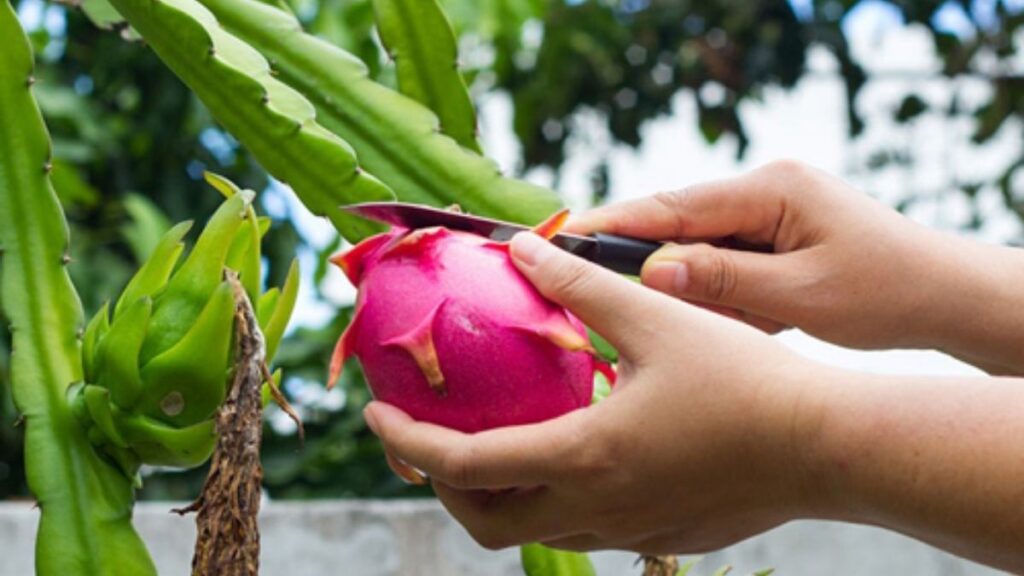
Dragon fruit takes about 1 to 2 years to bear fruit from the time of planting, but once it starts producing, it can continue year-round with proper care. The fruit is ready to harvest when the skin color changes to vibrant pink, red, or yellow, depending on the variety. The fruit should be slightly soft to the touch, similar to how you would test a ripe avocado.
To harvest, simply cut the fruit off the plant using sharp scissors or pruning shears, making sure not to damage the stems.
Where to Buy Dragon Fruit Cuttings or Seeds
You can find dragon fruit cuttings and seeds at many garden centers, online marketplaces, or specialty stores. When selecting a variety, there are a few common types to choose from, including Hylocereus undatus (the classic pink-skinned fruit) and Hylocereus costaricensis (the red-skinned variety).
If you’re starting from seed, keep in mind that it may take longer for the plant to produce fruit compared to starting from a cutting.
Conclusion
Growing dragon fruit on your balcony is a rewarding experience that can provide you with delicious, fresh fruit year-round. By following these tips choosing the right variety, preparing the soil, providing proper care, and managing light and temperature conditions you can enjoy the sweet taste of homegrown dragon fruit even in urban environments. With patience and attention, your dragon fruit plant will thrive, adding a touch of the exotic to your balcony garden.

